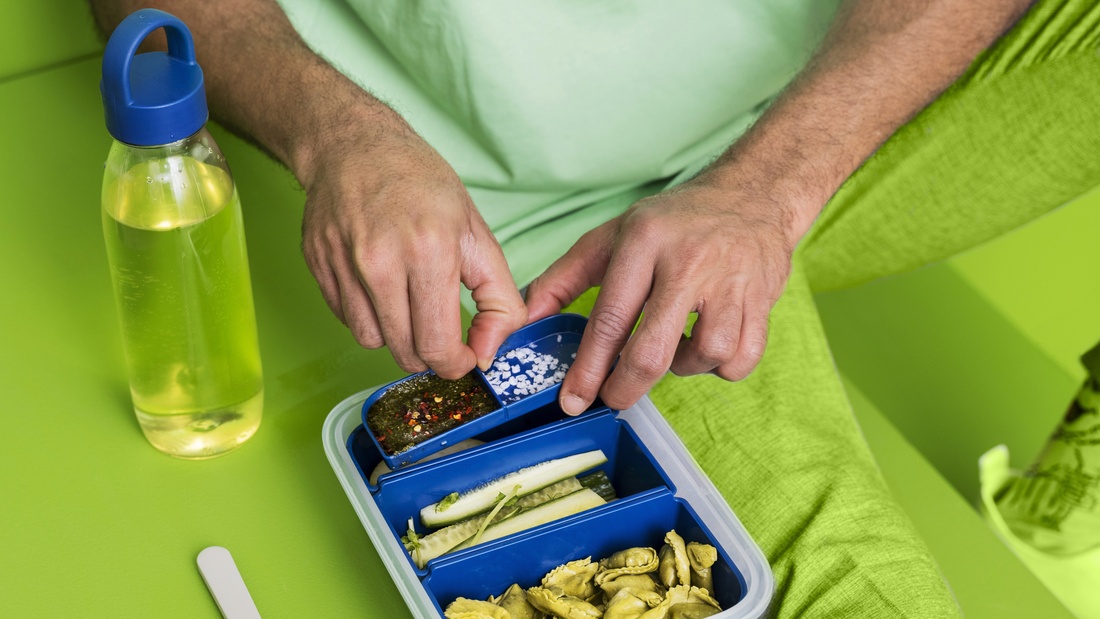Bringing packed meals and beverages is often an alternative choice amidst the hustle and bustle of daily activities. Its practicality, efficiency, and portability make it a preferred method for many to meet nutritional needs on the go. Of course, the selection of food and beverage packaging needs careful consideration to ensure optimal convenience and safety for one's health. So, what type of packaging is suitable for use? Let's explore.
BPA free
Bisphenol A, commonly known as BPA, is a chemical used to manufacture polycarbonate plastics and epoxy resins. BPA has been known and used since the 1950s. Initially, polycarbonate plastics and epoxy resin were commonly used for making bottle packaging and plastic food packaging.
However, the use of these plastics for food or beverage packaging is now prohibited due to the presence of BPA, which can increase the risk of hormonal disturbances, brain issues, and even cancer, posing a health hazard. Therefore, ensure that plastic food and beverage packaging used are free from BPA content.
“Food Grade” and “BPA Free” labels are preferable
Although several types of plastic are safe for use as food and beverage packaging, choosing plastics labelled as "BPA Free" and bearing the "Food Grade" or "Food Safe" label is even better. The "BPA Free" label indicates that the packaging is made from BPA-free plastic. Meanwhile, the "Food Grade" or "Food Safe" label means that the plastic packaging is safe for use as a packaging for food and beverages.
Generally, two types of plastics that carry the "BPA Free" and "Food Grade" labels are Polypropylene (PP) with the code number 5 and two types of plastics under "Other" (O) category, namely Styrene Acrylonitrile (SAN) and Acrylonitrile Butadiene Styrene (ABS) with the code number 7.
Choose PET, PP, or O plastic packaging?
Several types of plastic packaging can be used for food and beverages, including Polyethylene Terephthalate (PETE / PET) with the code number 1, Polypropylene (PP) with the code number 5, as well as Styrene Acrylonitrile (SAN) and Acrylonitrile Butadiene Styrene (ABS), both classified under "Other" (O) with the code number 7. Each has its characteristics that can influence how it is used as food and beverage packaging.
PET plastic has a smooth and clear surface, making it suitable for water bottles and flavoured beverage packaging. Though safe, PET plastic should only be used once, as repeated use may release harmful substances into food or beverages, posing health risks.
PP plastic has a hard and sturdy surface, resistant to high temperatures and non-reactive to solvents and BPA-free. It is safe for repeated use, but prolonged use may lead to wear and tear, making it unsafe.
SAN and ABS plastics, under the "Other" category, are strong, non-soluble, and not easily recyclable. These plastics are often used for making reusable water bottles and lunch boxes. They are free from BPA and designed for prolonged and repeated use.
What about glass packaging?
How about glass packaging? Glass packaging tends to be safer for food and beverages compared to plastic. This is because glass is inert, containing no chemicals and being non-reactive to solvents. However, glass packaging also has its drawbacks, such as being hard but prone to breakage. If not handled carefully, glass packaging can break and pose a risk of injury.
Are IKEA plastic packaging safe to use?
In the production of plastic packaging, IKEA uses Polypropylene plastic (PP), proven to be safe for use as food and beverage packaging. IKEA's food packaging is even safe for heating food in the microwave up to 100°C. Additionally, IKEA's food and beverage packaging, especially those intended for children, are BPA-free, ensuring they are safe for everyday use.
